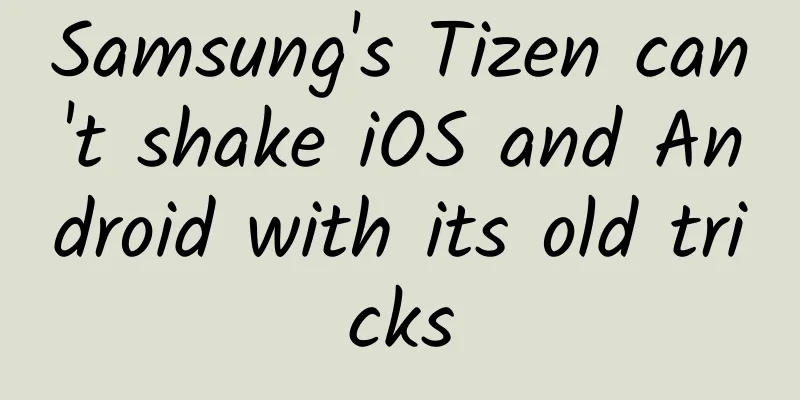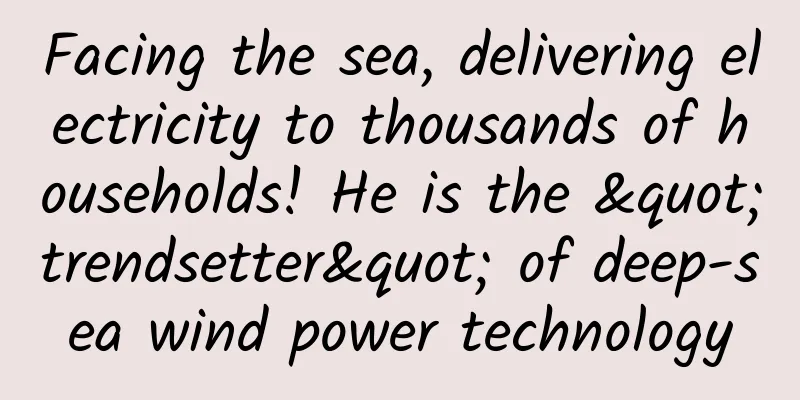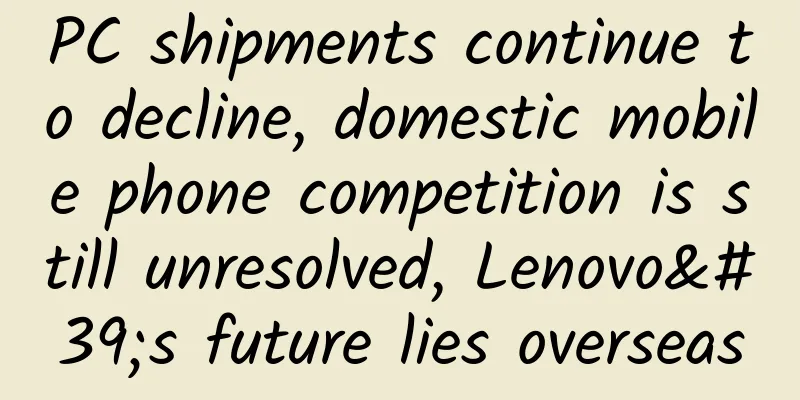Samsung's Tizen can't shake iOS and Android with its old tricks

|
After years of hype, we finally saw the world's first Tizen phone, the Samsung Z1. In fact, Samsung's expectation for Tizen has always been to be an "Android killer", hoping to gain user loyalty through the brand appeal and integrated services of the Galaxy series, and then seamlessly transfer them to Tizen, gaining absolute control over the system and hardware, and thus competing with Apple. Unfortunately, although Samsung became the number one Android brand and a smartphone giant for a period of time, the good times did not last long. Starting with the S4, Samsung's smartphone sales began to decline, and until last year, sales and profits plummeted, forcing Samsung to temporarily give up the offensive and start defending. In other words, now is not a good time to give up Android and turn to Tizen. Under such circumstances, the market direction of Tizen mobile phones has also changed. In fact, the hardware configuration of Samsung Z1 looks like a product from a few years ago: 4-inch WVGA resolution screen, 1.2GHz dual-core processor, 769MB RAM and 3.15 million pixel camera, the price is only US$92 (about RMB 575) for the bare machine, and it was first launched in the Indian market. Although it has moved from a flagship to an entry-level model, the Samsung Z1 is still worth paying attention to. On the one hand, Tizen is still the future of Samsung, not only in the field of mobile phones, but also in wearable devices, the Internet of Things, etc. At the same time, Samsung also needs to focus on emerging markets, and Tizen may be a better choice than Android. So, can the late Z1 help Samsung do this? Let's take a look at its user experience. Design and hardware performance: the level of a few years ago First of all, you may be disappointed with the design of the Samsung Z1. Basically, it looks like the Samsung S2 from a few years ago, a low-end Samsung phone now, so its price can be so low. The 4-inch WVGA resolution screen, the metal frame around the screen, and the plastic back cover are all so familiar. Interestingly, in order to ensure ease of use, Samsung still uses a key design similar to its Android models, such as the Home button, Back and Menu buttons, which means that the operation of the Z1 should not change much. Open the back cover and you can see a removable battery and dual SIM cards. Since Tizen products have actually been planned since 2012 but have only been released today, the hardware configuration of Z1 is already very low-end at present. The good thing is that Samsung can finally fully control the hardware and software system of the mobile phone like Apple. In terms of processor, the 1.2GHz dual-core processor is based on Cortex A7 and has an integrated 3G modem. It has 768MB RAM and 4GB ROM, a 3.15-megapixel rear camera and a 300,000-megapixel front camera, and a 1500mAh lithium battery. Through hardware testing, we can see that the performance of Samsung Z1 is better than the low-end Android model Motorola Moto E, but subjectively it is not fast enough and the multi-tasking performance is not good enough, but considering its price, it is in line with expectations. Samsung Z1 hardware test (lower values are better) Obviously, the Z1 is not a flagship, but a cheap, durable smartphone. So the question that remains is: Can Tizen replace Android? What is Tizen? Simply put, the underlying kernel of both Android and Tizen is based on Linux, but Tizen is a collection of other failed systems, including MeeGo, LiMo, Moblin, Bada, etc. Of course, Samsung and Intel rewrote the code, but Samsung is actually the only Tizen user at present, and Intel, distracted by its own thoughts, has actually focused on how to make its processors used by more Android phones. The core of the Tizen system is open source, but many applications are developed by Samsung based on the platform, which is called the "Tizen Certified Platform". Basically, this strategy is very similar to Android, that is, an open source core and component interface, which is convenient for hardware manufacturers to customize. Of course, at present, except for Samsung, basically no other brands use the Tizen system. Tizen applications are mainly divided into two types: HTML5 and local applications (based on C or C++ language), the latter of which has some mergers with Samsung's previous Bada system to facilitate software development. Samsung Z1 runs version 2.3, which is a stable version, and the more advanced version 3.0 will add 64-bit and multi-user support, but it is not clear when it will be released. User interface: a poor Android imitator When you first use the Samsung Z1, you will see some familiar elements, such as a home screen where widgets can be placed, a drop-down notification bar, and a main menu interface, which looks like a Samsung Android phone with TouchWiz interface. However, after using it, you will gradually find some weird parts, such as the two rows of icon interfaces at the bottom of the home screen, which is actually a Dock. However, application icons are limited to being placed in this position, not other positions on the home screen, and only dedicated widgets can be used in other positions. The widget section includes some commonly used content, such as weather, contacts, calendar, world clock, music, etc. They all use full-screen or half-screen sizes, so there is not much content that can be accommodated on one page. In addition, we cannot find more widget content in the Tizen application store. Swipe down from the top of the screen to open the notification panel, which works similarly to Android, but there are no integrated action buttons, which means that whether it is a missed call or email notification, you can't perform related actions, such as quick reply messages. As for other aspects, you will see a variety of color themes, but the lack of gradient effects makes it look a bit outdated. Some designs and operating logic are similar to the early Android 2.3, which is not user-friendly enough. In general, you will think that Tizen 2.3 is a slightly outdated and not user-friendly operating system that cannot compete with iOS 8 and Android 5.0. Apps and ecosystem: Not yet complete Samsung has equipped the Tizen system with a set of applications that rely heavily on Samsung accounts, which can synchronize some file content and also use services such as Google and Dropbox. Tizen also has an app store, including some free and paid apps, with a total number of about 1,000. Obviously, this number is far from the 1.3 million apps on iOS and Android, or even the 300,000 on Windows Phone. These 1,000 apps include well-known apps such as Google and Youtube, but their functions are obviously not as powerful as those on advanced systems. What is even more ironic is that Samsung's well-known Android apps such as S Note, S Voice, S Translation, Milk Music Service, etc. have not landed on the Tizen platform. Conclusion: Tizen is hard to become popular Previously, at the MWC 2014 Mobile Communications Conference, we were deeply impressed by the Tizen system. However, on the Z1, due to the backward system version, many modern designs and powerful functions are not reflected. So the next question is: will anyone choose this low-end Tizen phone and give up Android? Samsung Z1 is obviously not a good answer. Due to the strong performance of iOS and Android, other emerging mobile operating systems, including Firefox, Ubuntu, etc., basically have no chance. Tizen is no exception. In fact, Tizen has not shown any advantages at all, whether it is the operating experience, interface design concept, functions or the number of applications. It looks like an early version of Android, with many small problems and is not satisfactory. Technology media Arstechnica believes that Tizen is like a hodgepodge, bringing together the contents of mainstream mobile phone systems a few years ago, but without any real evolution. At the same time, it is regrettable that Samsung did not integrate exclusive ace services into its own operating system. In general, although Tizen has existed for many years, it is still limited to the concept stage. Even if Samsung is the world's largest smartphone manufacturer and fully supports Tizen, it is difficult to shake the position of iOS and Android. As a winner of Toutiao's Qingyun Plan and Baijiahao's Bai+ Plan, the 2019 Baidu Digital Author of the Year, the Baijiahao's Most Popular Author in the Technology Field, the 2019 Sogou Technology and Culture Author, and the 2021 Baijiahao Quarterly Influential Creator, he has won many awards, including the 2013 Sohu Best Industry Media Person, the 2015 China New Media Entrepreneurship Competition Beijing Third Place, the 2015 Guangmang Experience Award, the 2015 China New Media Entrepreneurship Competition Finals Third Place, and the 2018 Baidu Dynamic Annual Powerful Celebrity. |
<<: BYD: BYD has applied for more than 48,000 patents worldwide
>>: Will artificial intelligence really destroy humanity?
Recommend
Case: How do 7 traditional industries make money using WeChat?
1. Hotel: Vienna Hotel – WeChat made 100 million ...
How much does it cost to produce the Ya'an Printing Mini Program? Ya'an printing printing applet production price
In order to better penetrate into various industr...
Shorter than peers as an adult? Behavior you thought was normal could be the cause of precocious puberty
Friends who have children all understand this Whe...
In the era when there were no heating devices, people could only rely on drilling wood to make fire to keep warm? There are also "solar lighters"!
It's been really cold these days! We all feel...
Nexus 7 second generation MIUI experience
Google Nexus 7 2nd generation is the benchmark of ...
Artificial Intelligence Report: Scaling
Accenture has released a new report, “Artificial ...
6 ways to use countdown posters, how many have you seen?
Starting from July 21, Mr. Jia Yueting, Chairman ...
Learn open source projects: LeakCanary-How to detect whether Activity is leaking
OOM is a common problem in Android development, a...
A case study for setting up advertising accounts in the education industry!
In the first half of the year, various segments o...
How much does it cost to develop the Jiaozuo Tea Mini Program? How much is the price for developing the Jiaozuo Tea Mini Program?
There are two types of Jiaozuo Tea WeChat applet ...
Case | Marketing suggestions for 6 types of mobile financial users
Based on the research and analysis answers given ...
Apple Music disrupts the global music industry and marginalizes record companies
Over the past few years, it has become clear that...
How can technicians get rid of the anxiety in the era of transplanting everything?
2016 is the year when mobile Internet and hardwar...
iOS 14 Beta 6 released with 7 new improvements including spatial audio
iBeta Early adopters 2020-08-26 05:52:41 Preface ...
Private domain traffic cannot save the brand!
The concept of private domain traffic is said to ...









